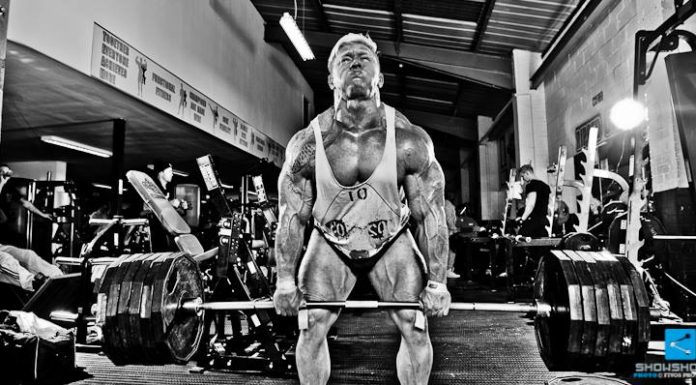
In recent years, high-fat diets have been on the rise. The popularity of the ketogenic diet as a weight loss tool has exploded, and the evidence is out that all that media were demonizing of saturated fats and cholesterol were based on nothing but false assumptions, fat is now not the enemy. However, keep in mind of course that this does not apply to deep fried trans-fat laden foods, as these have far more unhealthy implications than from their proposed fat content.
So if fat is not the enemy, does that mean carbohydrates are now the new demon of the nutrition world? Not so fast. If you suffer from any obesity or metabolic diseases such as diabetes, then yes, you might do best in backing off the carbohydrates for awhile. If you are a healthy individual looking to build muscle and burn fat, carbohydrates have their role, but it is not the role you might think.
There are two core things about carbohydrates we want to make clear in this article:
- Contrary to popular belief, carbohydrates are not an essential nutrient; neither is any type of sugar.
- Carbohydrates are best used for performance or hormonal modulation, as nature intended.
The core principles are these:
1. By priming your body for burning fat as fuel rather than carbohydrates, you can effortlessly burn body fat while maintaining your hard earned muscle. The aim is to get all your calories from fat and protein during the weekdays. Be liberal with the fat.
2. By cycling carb consumption in intervals, you can refill muscle glycogen and initiate a cascade of hormonal effects that will help you put on muscle while minimizing fat gain. The aim is to use weekends as a period to refeed carbohydrates (instead of consuming high fat).
Becoming Fat Adapted
We don’t want to call this a diet; it’s a lifestyle. Picking your metabolic fuel is not as simple as it might be for your cars, such as gasoline or diesel.
Preagricultural era, humans evolved the ability to burn fat as fuel. You can live on a diet completely void of carbohydrates for forever, as long as it contains adequate amounts of protein and fat. Simply this is a natural state that many hunter-gatherer cultures sustained themselves on for hundreds of thousands of years. The high carb diets of agriculture societies are less than 10 000 years old, which makes it understandable why we have not adapted as well to it yet and why so many countries are now battling obesity and diabetes on a grand scale.
If you decrease your carbohydrate intake to below 30g per day and make sure you get your total calorie intake from protein and fat (we are talking about at least +70% calories from fat here), your body will switch to burn fat as fuel instead of carbohydrates. The little glucose if any that the body needs it will derive from glycogenesis of protein.
Basically, a high-fat diet activates lipolytic (fat burning) enzymes that makes it easier to burn your body fat stores, enabling you to reach a lower % body fat.
This principle is almost exactly as the ketogenic diet, and for fat adaption to occur, we suggest you start by eating less than 30g carbs per day for the first 12 days. After this period the carbs makes a comeback!
Carb Cycling 101
To reap the power of carbohydrates, you need to cycle their use and at the right time. When you consume carbs on a daily basis, you just burn off the glucose from it as energy, without ever efficiently tapping into your body fat reserves.
The worse problem is that consuming carbohydrates, it produces insulin to process and store it as energy. Basically, it does the opposite of a fat adapted state, it actives lipogenic (fat producing) enzymes and deactivates the lipolytic (fat burning) enzymes. This leads to an increase in stored body fat and a decrease in burned stored body fat.
As you can probably grasp, nature did not intend for you to be able to eat +300g carbohydrates per day for months or even years on end. If you ever tried doing this without consuming grain products, you would understand how stupid it becomes. Try eating uncooked cereal grains or climbing trees all day to collect fruits to fit all of your daily calories from carbs, and if you live in a non-tropical climate, forget the fruits, then what?
Consuming your carbs at select intervals allows you the hormonal benefits without the excess fat, boosting anabolic hormones such as testosterone, growth hormone, insulin, IGF-1 and optimizing leptin (satiety hormone). Ideally, consume the major portions of your weekend carbohydrates post workout for best effect. We also recommend you drink a quickly assimilated carbohydrate supplement in your pre/post workout shake such as our Clusterbomb product.
One of the most beneficial hormonal benefits of carb cycling is the decrease in cortisol levels (stress hormone) that occurs during a carb refeed. Since cortisol is catabolic, a decrease primes the body for anabolism and this is why the carb refeeds are so potent for building muscle. The even better thing is that this carb load decrease in cortisol levels also extend into the high-fat weekday period, benefiting you for burning fat as well without breaking down any muscle.
Protecting Protein:
One thing that needs to be constant, when doing carb cycling and a ketogenic diet on weekdays, is protein intake. Protein intake is to be maintained at a high level at all times to avoid any catabolic processes that might break down muscle mass. We recommend a minimum of 0.82 g/lb or 1.8 g/kg of protein per day, any more of that won’t do any harm, but you need to adjust your macros accordingly concerning fat and carbs.
Aim to keep fat intake at a high during weekdays, such as at least 70% from fat and 30% from protein, then switch to the opposite 70% from carbohydrates and 30% from protein on weekends. You can experiment with the macros if you want but make sure you always keep protein high. Fat also protects protein, since, with adequate body fat or fat in the diet, the body won’t try to break down muscle to fill its energy needs when glucose is deprived. Adjust total caloric intake according to bulking or cutting needs.
Summary:
To successfully implement a carb cycling protocol for building muscle and burning fat, consider these principles and steps:
- Initially, spend 12 days in a very low carb ketogenic state (less than 30g carbs per day) to switch your metabolism to fat.
- After being fat adapted, continue high fat/protein, low carb on weekdays, adjust total calorie intake according to if you want to bulk (increase calories/fat) or cut (decrease calories/fat). During cut only reduce fat intake, always keep protein high to retain muscle.
- On weekends, refeed carbohydrates as much as you want (keep protein same as weekdays, but keep fat low) until you see your muscle going flat (retains water). When this happens, proceed to switch back to high fat/protein, low carb until the next weekend. When consuming carbohydrates and protein, still aim to stick within your total caloric intake, just adjust macros.
If executed correctly, you will experience effortless weight loss and muscle building, enabling you to maintain lots of muscle while also recomp and reach single digit body fat as needed. There is no single best metabolic fuel for the body; the key is how you utilize the best of both worlds.


















